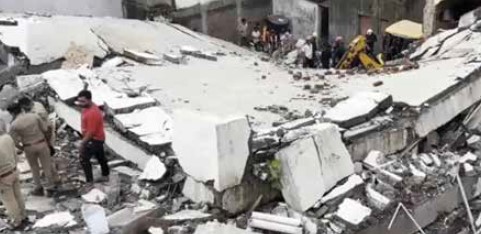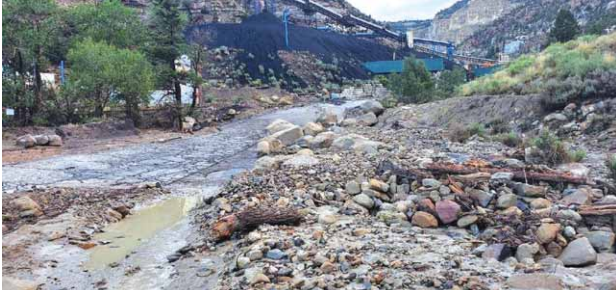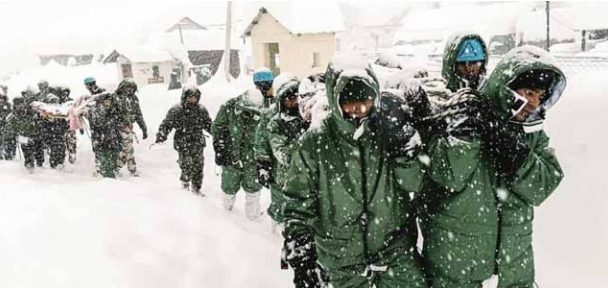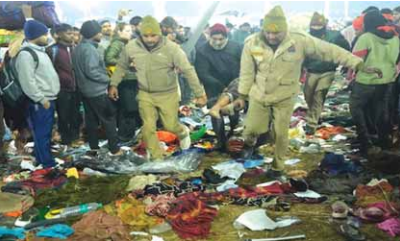On July 6, 2024, the outskirts of Surat, Gujarat, witnessed a heart-wrenching tragedy as a six-storey residential building crumbled under the relentless force of heavy rains, claiming the lives of seven individuals and leaving over 15 others injured. The incident, which occurred around 2:30 p.m. IST, has raised serious concerns about the structural integrity of buildings in the region, especially in the face of extreme weather conditions that have become increasingly frequent.
The ill-fated structure, located in the D N Nagar society of Sachin Pali village, was home to approximately 30 apartments, of which only five families were occupying the premises at the time of the collapse. Eyewitness accounts describe a scene of horror as large chunks of concrete and debris fell in a violent crash, leaving the community in shock. Rescue efforts were immediately mobilized, with local authorities and the National Disaster Response Force (NDRF) arriving on the scene to conduct search and rescue operations that extended into the following day.
The aftermath of the collapse revealed a chaotic and desperate situation. Rescue teams worked tirelessly, sifting through the rubble, using specialized equipment to locate and free individuals who were feared trapped beneath the debris. Horrifying visuals emerged from the scene, showing the remnants of the once-standing building, now reduced to a heap of crumbled concrete and twisted steel. Rescue workers shared chilling details about the sound of voices emanating from beneath the wreckage, heightening the urgency of their mission. By late evening, a woman was successfully rescued, providing a glimmer of hope amidst the despair, while officials continued to search for others.

As the search efforts unfolded, authorities began to investigate the circumstances leading to the disaster. It was revealed that the building had been constructed illegally in 2017, raising serious questions about the enforcement of building regulations in the region. The fact that this structure, built only eight years prior, was already deemed dilapidated is a stark reminder of the need for stringent oversight in the construction sector. In response to the tragedy, the owners of the building, along with an individual responsible for collecting rent, were booked under the Bharatiya Nyaya Sanhita, underscoring the legal ramifications of such negligence.
Dr. Saurabh Parghi, Surat’s District Collector, provided updates on the ongoing rescue operations, expressing cautious optimism about the potential for more survivors. “According to the woman we rescued, there could be four or five more people trapped inside. Teams from the NDRF and State Disaster Response Force (SDRF) are working tirelessly, and we remain hopeful of finding more survivors,” he stated. Surat’s Police Commissioner, Anupam Singh Gehlot, echoed this sentiment, affirming that the voices of those trapped were still audible, indicating that rescue operations were still viable.
The Surat building collapse is a grim reminder of the vulnerabilities faced by urban areas, particularly in regions prone to heavy rainfall and flooding. As climate change continues to exacerbate weather patterns, the need for robust disaster preparedness measures and stringent enforcement of building codes has never been more critical. This tragedy not only highlights the immediate human cost of such disasters but also serves as a call to action for local authorities to prioritize infrastructure safety and ensure that buildings are constructed and maintained to withstand the forces of nature.
In the wake of this devastating incident, the community is left to mourn the loss of lives and grapple with the reality of a disaster that struck so suddenly. As rescue operations come to a close, attention must turn to accountability and the necessary steps to prevent such tragedies from recurring. Investigations into the collapse are expected to reveal systemic failures that contributed to this catastrophe, sparking discussions around regulatory reforms and the importance of community engagement in disaster risk reduction.
The residents of Surat deserve a thorough investigation, accountability for those responsible, and the assurance that measures will be put in place to safeguard against future disasters. As the city begins to heal from this traumatic event, it must also fortify its resilience against the inevitable challenges posed by an increasingly unpredictable climate.
Source:
www.ndtv.com






